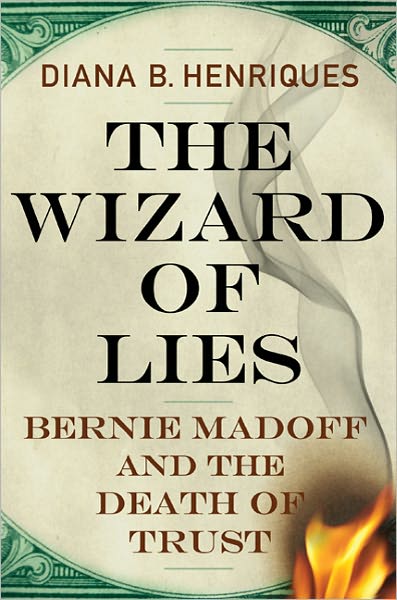On Penny Stocks (2)
Yesterday, I received a pitch in the mail for a penny stock.? They should put a big red X over my address, but alas, they don’t.
Now for all of my prior penny stocks that I have been written about, all have done horribly.
Now we have AER Energy Resources [AERN] which has done horribly, and does not file financial statements, having “gone dark.”? From a research note on the web, this is what they said:
Please be advised that VictoryStocks.com has been paid $1,300,000 by Sanaz Trading Inc. to perform promotional and advertising services for a one month profile of AER Energy Ressources Inc. which services include the issuance of this release and the other opinions that we release concerning AERN ? VictoryStocks.com has not investigated the background of Sanaz Trading Inc. the hiring company. Anyone viewing this newsletter should assume the hiring party or , affiliates of the hiring party own shares of AERN of which they plan to liquidate, further understanding that the liquidation of those shares may or may not negatively impact the share price. VictoryStocks.com has received this amount as a production budget for advertising efforts and will retain amounts over and above the cost of production, copywriting services, mailing and other distribution expenses as a fee for our services. As such, our opinion is neither unbiased nor independent, and you should consider that when evaluating our statements regarding AERN. VictoryStocks.com is owned by: FreePennyAlerts, LLC, 40 East Main Street, Suite 572, Newark, Delaware 19711. Questions regarding this release may be sent to Editor @ VictoryStocks.com.
I only ran into that scam because I Googled Lone Star Gold [LSTG], and that popped up.? Lone Star Gold is a negative income negative net worth stock.? A promoter for Lone Star Gold snail mailed me, complete with handwriting and excess staples, but the horrid disclosure in teeny tiny type was this:
IMPORTANT NOTICE AND DISCLAIMER: This paid email advertisement by XXX (hereafter “XXX” does not purport to provide an analysis of any company’s financial position, operations, or prospects and this is not to be construed as a recommendation by XXX, or an offer to sell or solicitation to buy or sell any security. Lone Star Gold Corp. (hereafter “LSTG”), the company featured in this issue, appears as paid advertising. Mermaid Finance Ltd has paid $1,768,000 for the dissemination of this info to enhance public awareness for LSTG. Although the information contained in this advertisement is believed to be reliable, XXX makes no warranties as to the accuracy of any of the content herein and accepts no liability for how readers may choose to utilize it. The information contained herein is based exclusively on information generally available to the public and does not contain any material, non-public information. Readers should perform their own due-diligence before investing in any security including consulting with a qualified investment advisor or analyst. Readers should independently verify all statements made in this advertisement and perform extensive due-diligence on this or any other advertised company. YYY has received twenty thousand dollars for this and related marketing materials. YYY/XXX also expects to receive new subscriber revenue, the amount which is unknown at this time, as a result of this advertising effort. YYY and XXX nor any of their principals, officers, directors, partners, agents, or affiliates are not, nor do we represent ourselves to be, registered investment advisors, brokers, or dealers in securities. XXX is not offering securities for sale. An offer to buy or sell can be made only with accompanying disclosure documents and only in the states and provinces for which they are approved. Research and any due diligence was conducted by an outside researcher for this advertisement. More information can be received from LSTG’s website at www.lonestargold.com. Further, specific financial information, filings and disclosures as well as general investor information about publicly listed companies and other investor resources can be found at the Securities and Exchange Commission website at www.sec.gov and www.nasd.com. Any investment should be made only after consulting with a qualified investment advisor and only after reviewing the financial statements and other pertinent corporate information about the company. Many states have established rules requiring the approval of a security by a state security administrator. Check with www.nasaa.org or call your state security administrator to determine whether a particular security is licensed for sale in your state. This advertisement is not intended for readers in any jurisdiction where not permissible under local regulations and investors in those jurisdictions should disregard it. Investing in securities is highly speculative and carries a great deal of risk, which may result in investors losing all of their invested capital. Past performance does not guarantee future results. The information contained herein contains forward-looking statements and information within the meaning of Section 27A of the Securities Act of 1933 and Section 21 E of the Securities Exchange Act of 1934, including statements regarding expected continual growth of the featured company. Forward-looking statements are based upon expectations, estimates and projections at the time the statements are made and involve risks and uncertainties that could cause actual events to differ materially from those anticipated. Forward-looking statements may be identified through the use of words such as expects, will, anticipates, estimates, believes, or by statements indicating certain actions may, could, should, or might occur. Any statements that express or involve predictions, expectations, beliefs, plans, projections, objectives, goals or future events or performance may be forward-looking statements. In accordance with the safe harbor provisions of the Private Securities Litigation Reform Act of 1995, the publisher notes that statements contained herein that look forward in time, which include other than historical information, involve risks and uncertainties that may affect the company’s actual results of operations. Factors that could cause actual results to differ include, but are not limited to, the size and growth of the market for the company’s products and services, regulatory approvals, the company’s ability to fund its capital requirements in the near term and the long term, pricing pressures and other risks detailed in the company’s reports filed with the Securities and Exchange Commission. XXX is a trademark of YYY. All other trademarks used in this publication are the property of their respective trademark holders. XXX is not affiliated, connected, or associated with, and are not sponsored, approved, or originated by, the trademark holders unless otherwise stated. No claim is made by XXX to any rights in any third-party trademarks.
Each promoter paid more than a million bucks.? Given the light level of trading in the stocks, and the low share price, the promoters were trying to do a significant pump-and-dump.? Personally, I think it would be really tough to squeeze over $1 million off of these tiny horrible companies, but maybe I don’t know the revenue model so well.
As I frequently say, “Don’t buy what someone want to sell to you.? Buy what you have researched, and what you think has value.”? Ignore penny stocks, with all of the ads that are on the web.? Short them if you dare.? These are horrible companies; any stock that has someone paid to promote it is a sell.? Sell, sell, sell!
This could not be simpler, so ignore the touts that promote penny stocks.? Short them if you dare, “the market can remain insane longer than you can remain solvent,” as Keynes said.
Penny stocks are for losers who dream of great gains.? They get the losses that they deserve.




